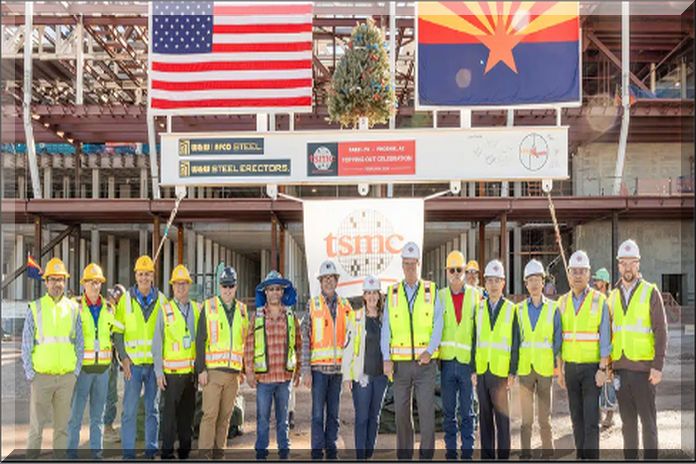By Armando Aliu
TAIPEI, Taiwan – Since the beginning of the COVID-19 pandemic, the People’s Republic of China (PRC) has gained ground in the US-PRC tech competition by accelerating the “Digital Silk Road” (DSR), the technological arm of the Belt and Road Initiative (BRI, formerly known as “One Belt, One Road,” – 帶 – 路). Initially introduced in 2015, the DSR initiative aims to strengthen both the technological development and the geopolitical potential of the PRC’s cyberspace capacity. As Jake Sullivan, national security advisor at the White House, highlighted in 2022 remarks, computing-related technologies (such as artificial intelligence [AI], big data, advanced logic, and memory chips), biotech, and clean tech are force multipliers throughout the tech ecosystem. As a result, leadership in these areas is a national security imperative.
Thus, there has been a major shift from a general focus on US-PRC trade competitiveness, to a more complex perspective of US-PRC tech rivalry. From 2019 to 2023, Nintendo, Foxconn, Samsung, Amazon, Microsoft, Apple, Volkswagen, chip giant Taiwan Semiconductor Manufacturing Company (TSMC, 台灣積體電路製造股份有限公司), Intel, Dell, Google, and many other multinational tech companies (MNCs) decided to move all or some of their manufacturing away from the PRC. Since 2023, the share of investments by US companies in Chinese technology industries has fallen rapidly due to the ban on US investments in some of China’s critical tech industries targeting three high-tech sectors: AI, advanced semiconductors, and quantum information technologies.
Taiwan: Global Tech Competitiveness and the United States-PRC Semiconductor Standoff
Taiwan stands at the front of the US-PRC tech rivalry and semiconductor standoff. In particular, TSMC – the world’s largest multinational Taiwanese semiconductor contract manufacturing and design company since 1987 – has been resisting Chinese pressure take over a leading role in the global semiconductor manufacturing market. TSMC is the world’s largest contract chipmaker and produces approximately 90 percent of the world’s leading-edge semiconductors that are used for applications in AI and quantum computing. Therefore, the involvement of the PRC and Taiwan in the supply chain, and the remaining regional political tensions and divergent strategic interests, have created geopolitical risks in the global semiconductor value chain.
The strong integration of Chinese digital technologies and the increasing role of China in exporting semiconductor materials (e.g., silicon, germanium, gallium arsenide, silicon carbide, gallium nitride, etc.) worldwide both pose potential risks in terms of the PRC taking control of the global semiconductor market. Tit-for-tat responses by the Chinese government, in collaboration with Chinese MNCs, have pushed the United States and its allies to take necessary measures to prevent any further advancement of Chinese MNCs into the global semiconductor market share. First, semiconductor sanctions have maintained the United States leadership status in the tech rivalry. Second, in 2022 the US Congress passed the CHIPS and Science Act, which provided funding for the “Creating Helpful Incentives to Produce Semiconductors [CHIPS) for America Defense Fund” to implement initiatives for microelectronics research and development.
Recently, TSMC announced that the US Department of Commerce and TSMC Arizona have signed a preliminary memorandum of terms (PMT) for up to USD $6.6 billion in direct funding under the CHIPS and Science Act. This third fab will produce the most advanced leading-edge semiconductors in the United States, bringing TSMC’s total investment in Arizona to over USD $65 billion – the largest foreign direct investments in a greenfield project in the history of the United States.
In response, the PRC aims to increase semiconductor subsidies and advance the global leading position of Chinese tech MNCs, such as Huawei, Cambricon, Longi, Willsemi, Baidu, Hisilicon, Smic, and so on. Therefore, the United States and its allies in Europe must consolidate their interests to protect their superiority in the global semiconductor market. US semiconductor leaders (e.g., Intel, Nvidia, AMD, Qualcomm, Broadcom, Texas Instruments, Micron) still dominate the global semiconductor market; however, the US presidential elections in November 2024 may pose a risk for diverging interests between national security stakeholders, political actors, and private sector shareholders.
For instance, the US government has long been under pressure to revoke a license, issued by the Trump Administration, that allows Intel to open a new fab to ship advanced central processors to Huawei (a heavily sanctioned Chinese telecoms company) for use in laptops. Recently, Republican US lawmakers criticized governmental bodies after sanctioned Chinese telecoms equipment giant Huawei unveiled a laptop powered by an Intel AI chip Core Ultra 9 processor. Thus, Intel’s US rivals rightly criticized this unfair license that breached the principles of a fair market in liberal economies. This case also damaged the collaboration of US semiconductor leaders in defending national and transatlantic security interests.
Strategic Investments of TSMC and Digital Geopolitics
Chinese tech giants (e.g., Huawei, China Telecom, China Mobile, ZTE, China Unicom) have been increasing their influence in the global tech market by developing digital infrastructure, telecommunications, AI, technology-oriented businesses, and digital payment platforms in the context of the DSR initiative. The PRC will likely increase the export of superfast fifth-generation wireless networks in the global tech market. Overall, the PRC’s ultimate objective is to increase its competitive advantage by investing in digital infrastructure and technological innovation, and by strengthening its relations in the areas of the digital economy, the semiconductor market, and digital cooperation. The PRC’s current digital expansionism prioritizes the DSR as a way to boost the market share and market value of Chinese tech giants, lead the way in advanced high-tech development, and raise profits in mobile device markets, the automotive system-on-chip market, the foundry market, semiconductor assembly and test services markets, and the integrated circuits market.
In a fracturing digital economy shaped by digital geopolitics, the transatlantic world has deep concerns about the PRC’s digital expansionism, and Chinese tech superpowers and their interventionist moves to the digital transformation and mega investments in the global digital sector. The PRC has huge buying power and is being galvanized by US sanctions into developing its own chip sector. China has the capacity to retaliate through increasing exports of Chinese semiconductor materials, and by using its geopolitical influence through a more offensive DSR and its overall BRICS+ diplomacy worldwide.
The Harvard University’s Growth Lab annually announces the rankings of countries in terms of the Economic Complexity Index (ECI). Countries develop their ECI by raising the complexity of the products they successfully export. ECI clarifies income differences across countries and anticipates future trends and dynamics – and further explains income differences across countries and predicts future growth better than any other single measure. Both the United States and the PRC are home to a range of sophisticated, specialized capabilities and are therefore able to produce a highly diversified set of complex products. Comparison of the US-PRC rankings in ECI reveals the level of transition in these states towards a digital economy, and can be used as a measurement of both comparative advantage and the extrapolation of future growth trends in the global technology market.
According to the Observatory of Economic Complexity (OEC), semiconductor devices were the world’s 20th most traded product in 2022, with a total trade of USD 156 billion. Between 2021 and 2022 the exports of semiconductor devices grew by 12.9 percent, from USD 138 billion to USD 156 billion. Most of the exports of semiconductor devices are produced by ten countries. The top exporters of semiconductor devices were China (USD 70.2 billion), Japan (USD 9.88 billion), Malaysia (USD 9.24 billion), Germany (USD 9.02 billion), and Singapore (USD 7.25 billion). In the same year, the top importers of semiconductor devices were China (USD 23 billion), Hong Kong (USD 18.3 billion), United States (USD 16.6 billion), Germany (USD 9.59 billion), and Netherlands (USD 5.44 billion).
As a response to the PRC’s digital expansionism and the DSR initiative, US-Taiwan tech partnerships and strategic investments have become more effective in order to balance global and regional digital geopolitics, and to reduce the geopolitical risks in the global semiconductor value chain. In particular, TSMC is leading the global semiconductor market, and stands on both the frontline of global tech competitiveness and the US-PRC semiconductor standoff.
Moreover, TSMC will advance the core competencies and competitive advantage of the US technology industry, uphold a vibrant global semiconductor ecosystem, and trailblaze future advancements in semiconductor technology (e.g., mobile communications, AI, high-performance computing, chip design, hardware systems or software, algorithms, large language models) through the company’s strategic mega investments in Phoenix, Arizona. The Biden Administration has praised the strategic investments of TSMC and highlighted that semiconductors power everything from smartphones to cars to satellites and weapons systems. Advanced chips come with significant economic benefits and national security advantages. Thus, TSMC Arizona will support the next generation of semiconductor research, innovation, development, and production.
The main point: The United States and its allies are taking measures to protect their interests and prevent Chinese tech companies from dominating the global semiconductor market. US-Taiwan tech partnerships and the strategic investments of TSMC effectively balance global and regional digital geopolitics, and significantly reduce the geopolitical risks in the global semiconductor value chain. By attracting the mega investments of TSMC, the United States will not only increase its competitive advantage in the global semiconductor market and create high-wage jobs, but it will also protect national security through increasing the capacity for leading-edge innovations in multiple fields of technology.





